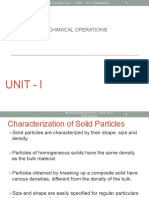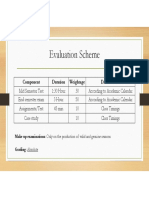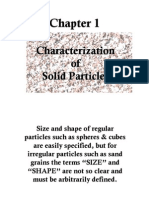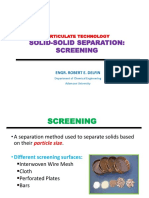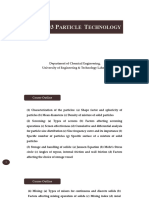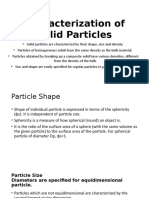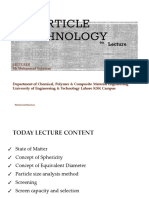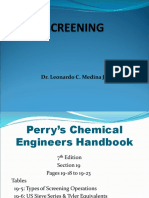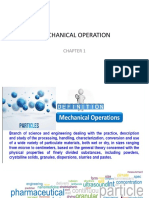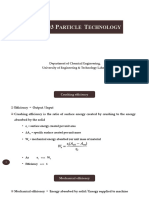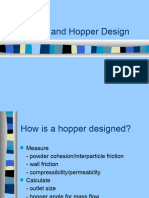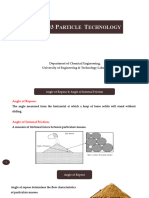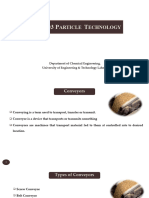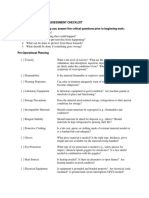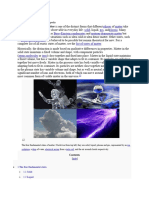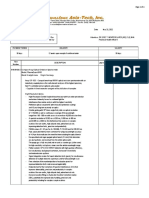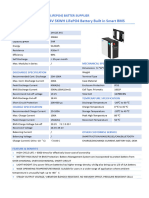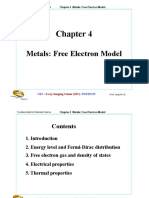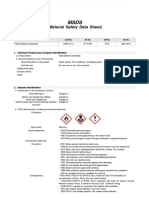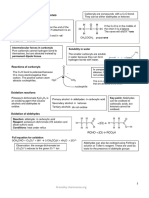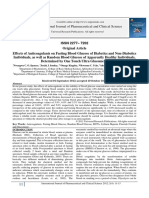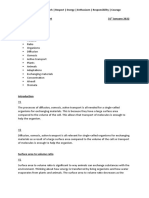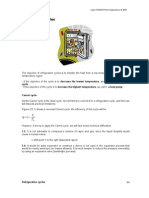0% found this document useful (0 votes)
49 views31 pagesWeek 2 Lecture Slides
The document discusses Tayler Standard Screen Series, which is a standardized system of screens used for particle sizing. The screens are arranged in a stack with decreasing mesh sizes from top to bottom. Particles are shaken through the stack and collected from each screen to determine the particle size distribution. Factors like particle shape, size, orientation and screen properties can affect screening efficiency. Screen analysis results are represented through differential and cumulative plots to characterize the particle size range in a sample.
Uploaded by
Jahanzaib FarazCopyright
© © All Rights Reserved
We take content rights seriously. If you suspect this is your content, claim it here.
Available Formats
Download as PPTX, PDF, TXT or read online on Scribd
0% found this document useful (0 votes)
49 views31 pagesWeek 2 Lecture Slides
The document discusses Tayler Standard Screen Series, which is a standardized system of screens used for particle sizing. The screens are arranged in a stack with decreasing mesh sizes from top to bottom. Particles are shaken through the stack and collected from each screen to determine the particle size distribution. Factors like particle shape, size, orientation and screen properties can affect screening efficiency. Screen analysis results are represented through differential and cumulative plots to characterize the particle size range in a sample.
Uploaded by
Jahanzaib FarazCopyright
© © All Rights Reserved
We take content rights seriously. If you suspect this is your content, claim it here.
Available Formats
Download as PPTX, PDF, TXT or read online on Scribd
/ 31










